

Cruise control

This driving assistance function allows you to drive at the speed of your choice without the need to action the accelerator. This system is available above 40 km/h (25 mph), with 4th gear or higher on a manual gearbox or 2nd gear or higher on an automatic gearbox.
Note: Information relating to the cruise control is displayed in zone A of the instrument panel.
To select the function
Turn control 1 to position "REG".
To select a cruising speed
At the time you select the function via the control 1, there is no cruise speed previously memorised:

Accelerate to the desired speed, then press button 2 or button 4. The cruise speed will then be memorised and displayed in zone A on the instrument panel.

You can then release the accelerator pedal. The vehicle will automatically keep to that chosen speed.
Note: The vehicle speed may vary slightly from that memorised.
Adjustment of the memorised speed while cruise control is in operation
To adjust the memorised speed, displayed in zone A, press on:
- button 4 to increase the speed, - button 2 to decrease the speed.
Note: you can use successive presses to modify the cruise speed in steps of 1 mph and a continuous press to jump in steps of 5 mph.
To exceed the cruise speed temporarily
While cruise control is in use, it is always possible to go above the cruise speed simply by pressing the accelerator pedal (for example to overtake another vehicle). The speed displayed in zone A flashes. You have only to release the accelator pedal to return to your cruise speed.
Note: if during cruise control the system cannot keep to the cruise speed (e.g. on a steep descent), then the speed flashes. If necessary, brake to curb your speed.

Deactivation of cruise control with memorised speed
- Either by pressing the brake pedal or the clutch pedal. - Or with a press on button 3. - Or when ESP or ASR is active.
Note: cruise control is disengaged when the gear lever is in neutral position. These actions bring up the display "OFF" in zone A in the instrument panel. These actions do not cancel your cruise speed which remains displayed on the instrument panel.

Reactivation of cruise control
- by recalling the memorised speed:
Following a deactivation, press on button 3. Your vehicle automatically resumes the memorised cruise speed displayed in zone A.
- by selecting the current speed:
Press on button 2 or 4 as soon as the desired speed is reached. The information "OFF" will then disappear from zone A.
To cancel the function
- by moving the control from position "REG" to position 0. - by stopping the engine.
The cruise speed chosen previously is no longer memorised.
In the event of a malfunction, a message is displayed, accompanied by a sound signal and lighting of the SERVICE warning lamp. Consult your CITROËN dealer.
Cruise control must only be used where road conditions permit driving at a constant speed. Do not use it on congested roads or when weather and road conditions are poor. The driver must still remain attentive and in complete control of the vehicle. You are recommended to keep your feet within range of the pedals. To avoid any interference with the pedals:
- ensure that any over-mats are correctly fitted, - never superimpose one overmat on another.
Changing a wheel Access to the spare wheel Lift the boot floor. Dimension of the spare wheel If your spare wheel is of a different dimension to those on the vehicle (identified by a label), it is essential to u ...
Fragrance cartridge This cartridge can be removed easily. The fi rst time it is used, replace the plug with a real cartridge You can change it at any time and store it in the sealed case which keeps it closed once i ...
Diesel engines They give access for checking the levels of the various fluids, the replacement of certain items and priming the fuel system. 1. Power steering reservoir. 2. Screen and headlamp wash reservoir. 3 ...
- Citroen DS3
- VW ID.3 Service Manual
- Toyota Camry
- Buick Enclave manuals
Ad-free. Influence-free. Powered by consumers.
The payment for your account couldn't be processed or you've canceled your account with us.
We don’t recognize that sign in. Your username maybe be your email address. Passwords are 6-20 characters with at least one number and letter.
We still don’t recognize that sign in. Retrieve your username. Reset your password.
Forgot your username or password ?
Don’t have an account?
- Account Settings
- My Benefits
- My Products
- Donate Donate
Save products you love, products you own and much more!
Other Membership Benefits:
Suggested Searches
- Become a Member
Car Ratings & Reviews
2024 Top Picks
Car Buying & Pricing
Which Car Brands Make the Best Vehicles?
Tires, Maintenance & Repair
Car Reliability Guide
Key Topics & News
Listen to the Talking Cars Podcast
Home & Garden
Bed & Bath
Top Picks From CR
Best Mattresses
Lawn & Garden
TOP PICKS FROM CR
Best Lawn Mowers and Tractors
Home Improvement
Home Improvement Essential
Best Wood Stains
Home Safety & Security
HOME SAFETY
Best DIY Home Security Systems
REPAIR OR REPLACE?
What to Do With a Broken Appliance
Small Appliances
Best Small Kitchen Appliances
Laundry & Cleaning
Best Washing Machines
Heating, Cooling & Air
Most Reliable Central Air-Conditioning Systems
Electronics
Home Entertainment
FIND YOUR NEW TV
Home Office
Cheapest Printers for Ink Costs
Smartphones & Wearables
BEST SMARTPHONES
Find the Right Phone for You
Digital Security & Privacy
MEMBER BENEFIT
CR Security Planner
Take Action
Guide to Adaptive Cruise Control
How this convenience feature works to reduce your stress on long drives
Adaptive cruise control (ACC) is like traditional cruise control, but smarter. ACC systems allow you to set a desired speed until your vehicle encounters slower-moving traffic. Then it will brake to maintain a set distance from the car ahead. Once the traffic starts moving again or if there is no longer a car in the lane ahead, ACC will accelerate to resume the previous set speed. Although ACC systems may take some getting used to, our survey respondents told us they appreciated the stress relief the feature brings.
“I use the feature mostly on the freeway and in stop-and-go traffic. I find it reduces tension and fatigue,” wrote a 2020 Subaru Outback owner. A 2018 Audi Q5 driver agreed. “It is so nice to just set it and let the car worry about the traffic,” they told CR.
The systems use lasers, radar, cameras, or a combination of those. If traffic slows to a stop, most ACC systems will bring the car to a complete stop, then bring it back up to speed when traffic gets going again. Others work only within certain speeds and/or might not start to accelerate automatically.
Adaptive cruise control (ACC): Cruise control that also assists with acceleration and/or braking to maintain a driver-selected gap to the vehicle in front. Some systems can come to a stop and continue while others cannot. If the car comes to a full stop, you may have to press the accelerator or a button on the steering wheel to start moving again.
Not all systems work at low speeds, so drivers who plan to use ACC in slow traffic should check the limitations of any system they plan to buy. These particular systems will often have the words “traffic jam” or “stop and go” in their name.
These features are usually activated using a button on the steering wheel with the image of a car next to a speedometer with an arrow pointing at it. A conventional cruise control system does not automatically keep a set distance away from the car in front, and it is indicated by a similar logo without the car next to the speedometer. A tip to know if your car has adaptive cruise control or regular cruise control is to look for the “gap distance” button, which usually shows a symbol of a car with horizontal distance bars in front. This button will determine how much space your car leaves between its front bumper and the rear of the car it is following.
In our most recent survey, we asked CR members to rate their experiences with the advanced safety and driver assistance systems on their model-year 2017 to 2022 cars. Respondents answered questions about their satisfaction with the systems. The survey covered about 47,000 vehicles. Most respondents told us they were “very satisfied” with ACC. Satisfaction was higher for older drivers.
OVERALL SATISFACTION
What to Look For in an Adaptive Cruise Control System
Every ACC system works slightly differently, says Kelly Funkhouser, manager for vehicle technology at CR. Some do a better job than others at recognizing merging traffic and automatically apply the brakes, while others wait too long to slow your car, requiring the driver to take control—especially when a vehicle in front of you cuts you off with a close merge.
“Most ACC systems can only be set to speeds above 20 mph but will slow the vehicle to speeds below that in stop-and-go traffic,” she says. “There are a few systems out there that don’t bring the car all the way to a stop but instead just shut off at low speeds. That can be dangerous when you’re traveling behind another slowing vehicle.” She recommends reading the automaker’s website closely and learning about the speed ranges before using ACC while on your test drive.
ACC is meant for convenience, not as a replacement for an alert driver, Funkhouser says. So don’t use adaptive cruise control as an excuse to get distracted. “Just because the car is controlling your speed doesn’t mean that you can check out,” she says. “These systems do not do well at detecting or slowing for vehicles ahead if you approach them at a high rate of speed. The driver should always be monitoring the surrounding traffic and looking ahead for potential hazards.”
Keith Barry
Keith Barry has been an auto reporter at Consumer Reports since 2018. He focuses on safety, technology, and the environmental impact of cars. Previously, he led home and appliance coverage at Reviewed; reported on cars for USA Today, Wired, and Car & Driver; and wrote for other publications as well. Keith earned a master’s degree in public health from Tufts University. Follow him on Twitter @itskeithbarry .
Sharing is Nice
We respect your privacy . All email addresses you provide will be used just for sending this story.
Trending in Car Safety
Popular Cars to Avoid and What to Buy Instead
Best Cars of the Year: 10 Top Picks of 2024
Best Used Cars and SUVs Under $20,000
Most Reliable 3-Year-Old Cars and SUVs That You Can Buy Right Now
Our Citroen C5 Aircross: the long-term verdict

► We live with a Citroen C5 Aircross ► Long-term test of French SUV ► Ours is a PureTech 180 Flair+
Imagine if you will a young, male executive, resplendent in Zegna suit, trapped on a budget airline flight. He’s discomfited that he can’t recline his seat, by the paucity of legroom and the borderline claustrophobia. His ears are assailed by babies screaming. And stag-dos screaming. Eventually he lands, to find his baggage mislaid, and wanders outside in the pouring rain – where he’s collected by his immaculate wife in a Citroën C5 Aircross. The exec snuggles into his squidgy seat, as the Progressive Hydraulic Cushion suspension eases over the exit’s speed bumps, and breaks into a grateful smile as he’s chauffeured home in blissful peace and comfort…
This is my daydream for a TV spot advertising Citroën’s advanced comfort, and any resemblance to the editor-in-chief’s seven months in a C5 Aircross is entirely intentional. Apart from the Zegna suit. And leaving the screaming babies behind at the airport: my three come with me, strapped into the individual, sliding rear seats. If carrying three rear passengers is crucial, put the C5 on your list. Just be warned that the middle seat doesn’t have Isofix clamps.
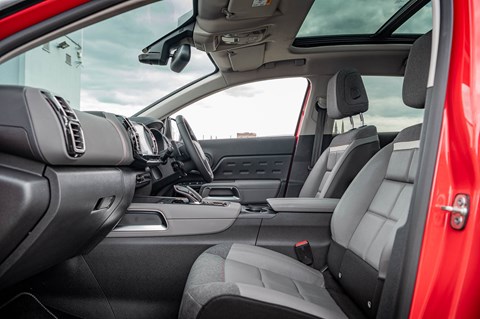
In my introductory report, I posited the theory that the Aircross might undermine my prerequisites for an enjoyable car: precise steering, laser-guided cornering, sonorous engine. Indisputably, the Citroën offers none of the above.
The steering’s like Forrest Gump’s box of chocolates – you’re never quite sure what you’re going to get: light, knotty, edgy, languid. Just take things steady, which also avoids the potential bodyroll, necessary to enable the delectable ride. And the range’s flagship engine – the 178bhp 1.6-litre turbo four-pot here – is workmanlike, with sufficient punch to crack 62mph in just over eight seconds.
But to get hung up on all this misses the point of the C5 Aircross. Driven steadily, it returned 40mpg, better than the official figure. The boot is massive, swallowing prams and easily lugging our waste to the recycling centre.

The cabin feels airy and spacious, a sensation heightened by the glass roof standard on the top-spec Flair+ trim, costing from £29k. This also includes adaptive cruise control, which takes charge effectively on motorways, backed by lane-departure-assisted steering (a bit intrusive, so switch off if you don’t want its help) and blindspot monitoring. The C5 Aircross is a well-equipped, good-value car.
It recalibrated my definition of family wheels. I’d recommend it to anyone looking for a comfortable, practical SUV. It’s a far nicer way to travel than by budget airline.
By Phil McNamara
Logbook: Citroen C5 Aircross PureTech 180 Flair+
Price £31,330 (£32,125 as tested) Performance 1598cc turbo four-cyl, 178bhp, 8.2sec 0-62mph, 134mph Efficiency 38.2mpg (official), 34.0mpg (tested), 129g/km CO2 Energy cost 16.0p per mile Miles this month 2083 Total miles 12818
Month 6 living with a C5 Aircross: check yourself
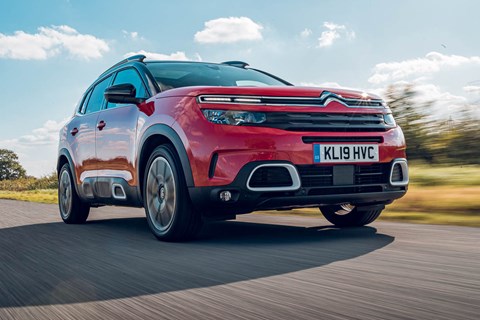
You jump in with your road-testing head on and you are… absolutely dumbfounded. The bodyroll! The barely-interested, candyfloss-light steering! What is this thing? Then the key’s in your hand, the C5’s in your life and it dawns on you that this Citroën is a work of some genius.
The ride is sensationally cosseting, like a Bentley Bentayga in Comfort for a fraction of the price. The boot’s massive, the wireless charging pad a lifesaver and the laidback-like-a-Provençal-afternoon vibe of the car – much, I’d imagine, like that of the classic DS in its pomp – a balm for the frantic, faintly toxic pace of life in 2020. If only the throttle response wasn’t so sleepy: hitting Sport mode in the C5 feels entirely inappropriate.
By Ben Miller
Price £31,330 (£32,125 as tested) Performance 1598cc turbo four-cyl, 178bhp, 8.2sec 0-62mph, 134mph Efficiency 38.2mpg (official), 32.6mpg (tested), 129g/km CO2 Energy cost 16.2p per mile Miles this month 546 Total miles 10735
Month 5 living with a C5 Aircross: picking faults
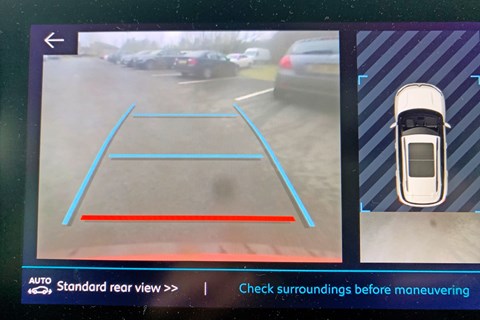
The C5 Aircross has been winning hearts and minds with its comfort, economy and practicality, so to prove we haven’t gone soft here’s a roll call of bad stuff. The car equivalent of my household DIY to-do list.
Let’s start with the start button: it requires too long a press to ignite or kill the engine. It’s not just a Citroën thing: I once unwittingly left a Peugeot 5008 running while unlocked outside Starbucks, which speaks equal volumes about the button’s tuning and the car’s refined idling.
Similarly obstructive is the infotainment, which takes ages to clock-on for use. I’m always in a hurry and want to instantly input an address to avoid going wrong. But I was incorrect to criticise the roof blind’s ‘temperamental’ button: it’s a two-stage switch, with a firm press for automated operation and a lighter touch enabling manual control for part closure.
The DAB radio seems to drop out more than other cars’ along the A1 corridor, and the automatic transmission’s downshifts can be a bit lumpy in slowing traffic. And it looks cheap for the reversing camera’s view to redact chunks of surroundings, no doubt to save money on extraneous lenses.
Truth be told, this is nit-picking on an industrial scale. The C5 Aircross is far greater than the sum of these gripes.
Price £31,330 (£32,125 as tested) Performance 1598cc turbo four-cyl, 178bhp, 8.2sec 0-62mph, 134mph Efficiency 38.2mpg (official), 35.5mpg (tested), 129g/km CO2 Energy cost 16.2p per mile Miles this month 1551 Total miles 10189
Month 4 living with a C5 Aircross: fuel economy and mpg

This is not a drill! Team Aircross (me and my C5) have just smashed 400 miles from a tank! Regular readers will have monitored my conversion from driving as if in a James Bond car chase to pootling around as if James Blunt was permaloop on the stereo, to savour the benefit of the C5’s comfy nature.
So I’ve been building up to some economy runs. The winning formula? Eco button on to anaesthetise the accelerator, air-con mostly off, progress at a pace that enables me to check out the countryside and hum You’re Beautiful. The result: 440 miles from 50-odd litres, at 40mpg. That’s better than the official mpg figure, and no fluke: Team Aircross scored 420 miles again a few weeks later.
Price £31,330 (£32,125 as tested) Performance 1598cc turbo four-cyl, 178bhp, 8.2sec 0-62mph, 134mph Efficiency 38.2mpg (official), 36.0mpg (tested), 129g/km CO2 Energy cost 16p per mile Miles this month 1922 Total miles 8638
Month 3 of our Citroen C5 Aircross long-term test: how it drives
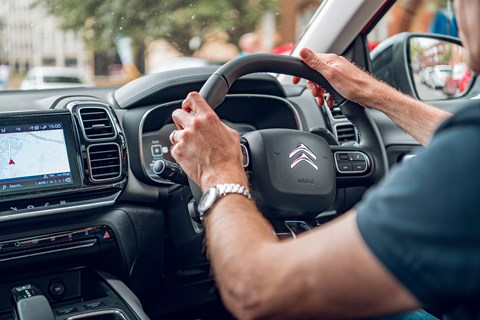
Three months in, and the Citroën-McNamara family courtship is getting serious. The attraction extends beyond this comfort-biased crossover’s easy-going nature. Its practicality is a real help around the house. The family spent two weekends laying a new lawn, which entailed loading the Aircross with turf ’til the springs sagged and it became a Groundcross, then hauling waste to the tip.
The two-level boot floor isn’t quite the gimmick I initially thought, adding 9cm of depth to help cram in my three girls’ suitcases, toys and scooters under the cover for a weekend away. Basically this biggest-in-class boot is more cavernous than a spelunker convention, even with the sliding rear bench in its rearmost position to allow sufficient room for adult legs behind my low-flying, thrust-back driver’s seat.
However, only the two outer seats have Isofix brackets on which to clamp child seats, and there’s no tethering hook on the rear of the middle seat. The Peugeot 5008, by contrast, anchors three child seats across the back.
To drive, the Aircross doesn’t get the heart racing. The variable-rate steering is great at manoeuvring speeds, superlight and greyhound fast from lock to lock. But once you’re rolling around town, it becomes as unpredictable as Joe Pesci in Goodfellas. The rack typically feels light and a bit vague, occasionally with inconsistent weighting as you swing eagerly through corners. Reassuring heft arrives at faster speeds, though weirdly it then gets all sensitive and needs frequent correction.
Steering precision isn’t helped by the soft suspension set-up. Bumps on corner entry can get the body pitching, before the C5 rolls into a jaunty lean through the bend. This masks the plentiful underlying grip, but there’s a nagging sense that the Aircross is at the border on its way out of its comfort zone.
All told the C5 Aircross is more dependable than racy. And given this is a family car, there’s plenty to be said for that.
Price £31,330 (£32,125 as tested) Performance 1598cc turbo four-cylinder, 178bhp, 184lb ft, 8.2sec 0-62mph, 134mph Efficiency 38.2mpg (official), 35.0mpg (tested), 129g/km CO2 Energy cost 17p per mile Miles this month 1371 Total miles 6716
Month 2 living with a Citroen C5 Aircross: Comfy McComfortface™
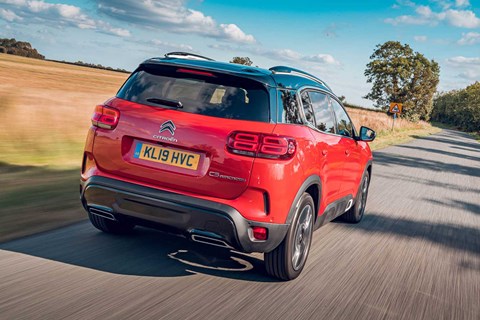
Once, while trying to give me a massage, a masseur commented that I seemed tense. The more I tried to relax, the tenser I became. Inevitably, it ended with the masseur suggesting I take a hike.The C5 Aircross’ ride is like having a massage. Or like a normal person having a massage. There’s activity, but it’s relaxing. You feel the suspension working away at each corner, absorbing the shock of a bump, calming the drop of a wheel into a pothole, the body pitching in a pillowy way.
Instead of a traditional bump stop at both ends of the suspension travel, there’s a hydraulic damper which absorbs and gradually dissipates the kinetic energy. Avoiding jolts at the extremities of wheel travel allows Citroën to deploy a softer setting in the midrange, where the springs and shocks do most of their work. It makes for a splendidly smooth and cosseting commute.
Price £31,330 (£32,125 as tested) Performance 1598cc turbo four-cylinder, 178bhp, 184lb ft, 8.2sec 0-62mph, 134mph Efficiency 38.2mpg (official), 35.0mpg (tested), 129g/km CO2 Energy cost 15p per mile Miles this month 354 Total miles 3195
Month 1 living with a C5 Aircross: hello and welcome
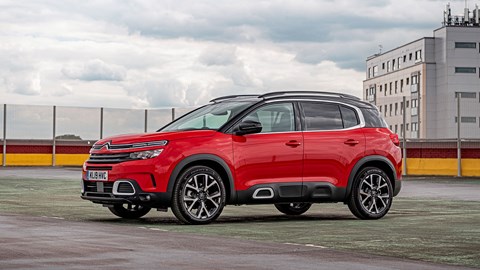
Periodically the CAR staff have a chat like this with Our Cars supremo Ben Pulman. ‘Which car would you like to run next?’ ‘I’d like to run a Ferrari 488 GTB.’ ‘Excellent, Ford Focus it is.’ So when I asked Ben for a hybrid or electric non-SUV, he naturally channelled me into a petrol-engined SUV, the Citroën C5 Aircross.
It’s a model I drove for a few days when it made Europe’s 2019 Car of the Year shortlist, musing: ‘Citroën’s midsize SUV has a welcome comfort focus. So the ride is comfy and calm, and it’s peaceful thanks to effective noise suppression. Shame the steering feels light and imprecise.’ I scored it joint last of seven contenders.
So as the new McNamara family workhorse, this top-spec Flair+ model has some convincing to do. First up it’s a handsome steed. There are loads of brilliant design details, such as the double-chevron grille insert wrapping around the daytime running lights, the curvy front and rear wings, the chrome ‘reversed C’ bisecting the side glass (hints of Bugatti Chiron, anyone?), the three-dimensional rear lamps.
Not wishing to undermine this distinctiveness with a muted colour, I opted for the £545 Volcano Red paint and £250 worth of contrasting black roof. The 19-inch two-tone alloy wheels are standard – turn them all black for a mere £100.
The C5 Aircross costs from £23,830 for a base-spec Feel car. It’s pretty well equipped, with the Progressive Hydraulic Cushion suspension standard, along with smartphone-mirroring infotainment, voice control, rear parking sensors and decent safety kit including blindspot monitoring, anti-lane-departure steering and automated braking if you don’t respond to an upcoming obstacle.

Stump up £2100 more for Flair trim, which adds 18-inch wheels, sat-nav, a reversing/overhead-view camera and comfort seats. Soft under the bum, supportive behind your lower back and part-finished in a grey textile seemingly from a rucksack, they are both supremely snug and aesthetically delightful.
But we’ve stepped up to the £28,300 Flair+ trim with so many goodies I didn’t feel the need to tick a single optional feature. It has a full-length glass roof (whose one-touch opening seems a tad temperamental), keyless entry and pointless hands-free tailgate, wireless charging and active cruise control. Combined with active lane assist, this gives you Level 2 autonomous driving on the highway, starting and stopping the C5 according to traffic and keeping it between the dotted lines.
Operating it requires you to grope among seven controls on a stalk part-obscured by the steering wheel. While the ergonomics are messier than a six-year-old’s bedroom, the system keeps the Aircross smoothly in lane on fast, tricky sweepers, and isn’t too hectoring in its efforts to make you grip the wheel.
There are two petrol and two diesel engines, and we’ve picked the top-spec four-cylinder petrol. This turbocharged 1.6-litre only musters 184lb ft of torque, but it can wade in like a bouncer during a nightclub brawl, overwhelming the wheels in a turn and deflecting the softly-sprung body sideways. Acceleration feels sprightly enough: you wouldn’t want any more shove, given the soft suspension and light steering. First impression is that this variably-assisted rack is a mixed bag: sometimes sloppy off the dead-ahead, then fidgety on the motorway, with frequent nibbles of intervention from the lane ‘assist’.
Put these dynamic attributes together, and the C5 Aircross seems made for cruising not hooning. So I’ll recalibrate my driving style and settle back in those lounge seats, to enjoy a loping primary ride which won’t pummel you like so many of today’s family cars, and revel in the airy, stylish cabin and pretty decent fuel economy. Let’s see how that goes over the next few months…
Price £31,330 (£32,125 as tested) Performance 1598cc turbo four-cylinder, 178bhp, 184lb ft, 8.2sec 0-62mph, 134mph Efficiency 38.2mpg (official), 35.0mpg (tested), 129g/km CO2 Energy cost 15p per mile Miles this month 3195 Total miles 354
More Citroen reviews by CAR magazine
By CAR's road test team

- Tips & advice
Cruise control and adaptive cruise control: the complete guide
Cruise control is a great extra to have if you do regular motorway journeys, while adaptive cruise control arguably makes even more sense.

What is cruise control? Cruise control is an electronic system that automatically regulates a car's speed without the driver having to keep their foot on the accelerator. That's the simple answer, but today car manufacturers are adding ever-more advanced cruise control systems to their models, all designed to make driving easier and safer, while many of the newer technologies are on the first tentative steps towards autonomous vehicles .
Once upon a time, cruise control was the preserve of high-end luxury cars, but as the technology has become more affordable, car makers have rolled it out on more mainstream models. Today, you can get it on even the smallest city cars , while other models get a proprietary speed limited system that requires a bit more input from the driver.
• What is AEB?
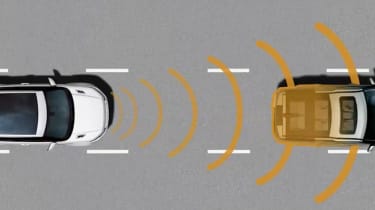
Elsewhere, the progress of technology means that car makers have been able to develop adaptive cruise control (ACC) systems that can vary a car's speed according to traffic, while the most advanced systems are on the steps towards fully autonomous driving.
Here we explain how cruise control works and break down the different kinds of system on offer, highlighting their advantages and limitations, so you can decide if it's an option that's worth ticking on your next new car purchase.
Cruise control history
Cruise control can trace its origins back to the 17th and 18th century, when engineers developed 'speed control' systems for steam engines. These mechanical systems were adapted by some early automobile makers at the start of the 20th century, although the predecessor to modern cruise control didn't appear until the 1950s.
The first car to feature cruise control was a 1958 Imperial, which was Chrysler's luxury division. Called 'Auto-pilot', the system was mechanical and was connected to the engine propshaft. It had a dial on the dashboard to preselect a speed and an electric motor that adjusted throttle position to maintain it.
US firm American Motors produced a budget version of cruise control for its automatic cars in 1965, but cruise control really took off in the US during the oil crisis of 1973. Manufacturers had developed electronic cruise control systems by this time, and these makers promoted the benefits of the system as it delivered constant throttle inputs, rather than the erratic flexing of the driver's right foot for improved fuel economy.
• What is horsepower?
Cruise control found popularity in the US first because of that nation's fondness of automatic gearboxes, long travelling distances and the relatively straight and wide highway network. In Europe, cruise control took a little longer to gain a foothold, but like the US, it first appeared on high-end luxury cars before filtering its way down to more mainstream models.
The first adaptive cruise control (ACC) system appeared in Japan in the early 1990s, although the first systems simply warned the driver of slower traffic ahead, and didn't control the car's throttle or brakes.
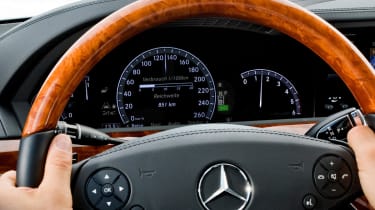
The first proper ACC system was Mercedes ' Distronic system, which appeared on the S-Class limousine in 1999. This system not only controlled the throttle, but also the brakes to maintain a set distance to the vehicle in front.
Since then, car makers have embraced ACC, and it can be found on superminis , hatchbacks and sports cars , while the rising level of traffic on our roads means it's arguably a more useful feature than standard cruise control on its own, as it can adjust speed according to traffic flow.
• What is 4x4? All-wheel-drive systems explained
How does cruise control work?
Modern cruise control systems are integrated into a car's electronics, and are often combined with additional tech, such as lane departure warning and blind spot sensors. With standard cruise control, you need to select cruise mode via a switch, then accelerate to your desired speed, and press a button – either on the steering wheel or on a lever on the steering column - to set that speed.
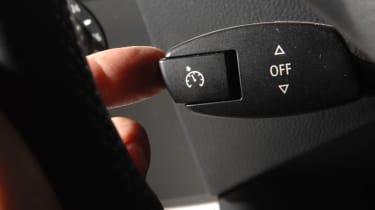
The car's electronics then maintain your selected speed, so you can take your foot of the accelerator. On some cars you can adjust your speed via a button, and the car will automatically change its speed accordingly.
On a car with adaptive cruise control (ACC), you switch on the system, then you can raise or lower your speed as desired, and the car will accelerate to that set speed. These systems use either radar or laser sensors to maintain a set distance to the car in front, and they also have the ability to increase or decrease that distance as required.
To deactivate cruise control, you simply press a button to regain control of the throttle. However, one important safety feature that all of these systems are required to have is that the system will immediately deactivate if the car's brakes are applied. On cars with a manual gearbox, pressing the clutch pedal will sometimes have the same effect, although not all cars behave in the same way. Most cars will have a memory function, so that you can resume the same speed after the brakes have been applied.
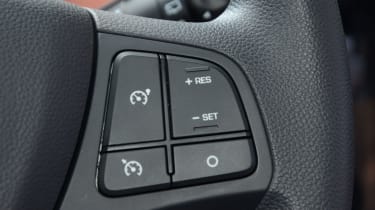
Earlier cruise control systems would have a lower speed threshold of around 20-30mph where cruise control couldn't be activated, and some manufacturers still maintain this set-up. However, some of the latest ACC systems also incorporate a traffic function, so they can operate in stop-start conditions.
Cruise control types
Essentially there are four types of cruise control on offer, ranging from the most basic speed limiter to systems that can negotiate stop-start traffic and even change lanes. We look at the benefits and disadvantages of each below.
Speed limiter
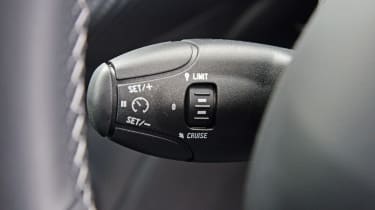
What is it? The most basic form of cruise control. There are systems that can be hard-wired into a vehicle to limit its top speed (a 70mph limit in vans, for example), or there are driver-activated systems. You can set a maximum speed for your vehicle, but you maintain control of the car's accelerator at all times. When you approach your set maximum, the car will simply stop accelerating. This will usually happen softly, so you'll barely notice.
Found on: Citroen, Ford, Nissan, Peugeot, Renault, vans, can be added aftermarket, too. Advantages: Helps you stick to speed limits, saves fuel. Disadvantages: Driver has to continue using the throttle to maintain speed.
Cruise control

What is it? Standard cruise control is a fairly common feature on new cars. You turn the system on (usually indicated by a graphic on the dashboard), then once you're up to your desired speed, you press a button to set it, and the car maintains that speed.
Found on: Most mainstream new cars, except for the most basic trims. Advantages: Takes strain out of long drives, more fuel efficient than using the accelerator manually, helps you stick to speed limits. Disadvantages: Driver has to take over when traffic slows, only worth using on clear motorways.
Adaptive cruise control
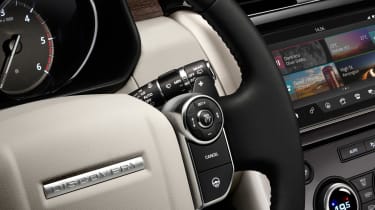
What is it? Either a radar or laser-based system that can maintain speed, but reduces speed if the gap to the car in front falls below a preset distance. This constitutes Level One automation on the automated vehicle classification chart, as they driver is required to take control at any time.
Found on: Assorted BMW, Fiat group, Ford, JLR, Lexus, Mercedes, VW Group models, and increasing in use by other makers. Advantages: Adjusts speed according to traffic, takes strain out of long drives, helps fuel efficiency. Disadvantages: Sensors can be 'blinded' in bad weather, electronics can be slow to react to sudden traffic slowing, distance to the car in front can be big enough to tempt other drivers to cut in front of you, sometime systems are jerky when changing speed.
Semi-autonomous cruise control
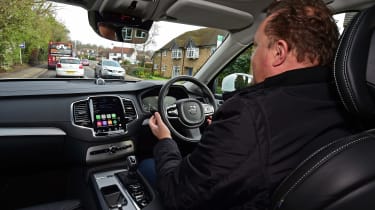
The latest hi-tech cruise control systems are one step closer to the fully autonomous self-driving car, and are classed as Level 2 automation. This means the automation can control the throttle, brakes and steering, but the driver still needs to intervene if the systems fail to detect objects. Semi-autonomous systems can vary in sophistication, and can help with steering inputs, move in stop-start traffic, or even change lanes on the motorway with the flick of an indicator, or adjust the car's speed according to GPS data and road sign recognition cameras.
Found on: Audi A3 /A8/Q7, BMW 7 Series , Mercedes S-Class , Volvo XC90 Advantages: Takes strain out of driving and traffic jams, helps fuel consumption. Disadvantages: Sensors need to be kept clear for it to work, too easy for driver to 'switch off' and lose concentration.
Do you have cruise control or adaptive cruise control on your car? Do you use it? Let us know what you think of the technology in the comments...
Dean has been part of the Auto Express team for more than 20 years, and has worked across nearly all departments, starting on magazine production, then moving to road tests and reviews. He's our resident van expert, but covers everything from scooters and motorbikes to supercars and consumer products.
Most Popular
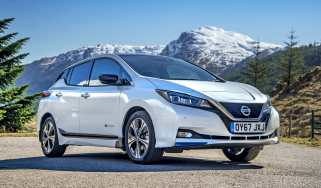
Car Deal of the Day: £14,000 off a factory fresh, top-of-the-range Nissan Leaf
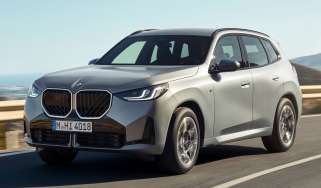
No more EV! New BMW X3 gets petrol, diesel and PHEV power only
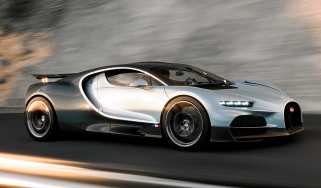
New Bugatti Tourbillon revealed: 1,774bhp, £3.8m, V16 hypercar aims to blow rivals away

Citroen C3: Cruise control / Switching on/pausing. Changing the cruise speed setting
Switching on/pausing
- Turn thumbwheel 1 to the " CRUISE " position to select cruise control mode; the function is paused.
- Press button 2 or 3 to activate cruise control and save a speed setting when the vehicle has reached the desired speed; the vehicle’s current speed is saved as the speed setting.
- Release the accelerator pedal.
- Pressing button 4 temporarily pauses the function.
- Pressing button 4 again restores operation of the cruise control (ON).
Changing the cruise speed setting
The cruise control must be active.
To change the cruise speed setting, based on the vehicle’s current speed:
- In +/- 1 mph (1.6 km/h) steps, briefly press button 2 or 3 as often as necessary.
- Continuously, in steps of +/- 5 mph (8 km/h), press and hold button 2 or 3.
To modify the cruise speed setting using the speed suggested by the Speed Limit Recognition and Recommendation shown on the instrument panel:
- Press button 5 once; a message is displayed to confirm the memorisation request.
- Press button 5 again to save the suggested speed.
The speed is immediately shown on the instrument panel as the new speed setting.
Information displayed on the instrument panel
Temporarily exceeding the programmed speed. switching off. malfunction, other information:, citroen c3 2016-2024 owners manual: interior lighting, citroen c3 2016-2024 owners manual: adblue® range indicators (bluehdi).
- Manuals Home
- 3rd Generation C3 Owners Manual
- 3rd Generation C3 Service Manual
- Starting using another battery
- Automatic air conditioning
- Switching on/pausing. Changing the cruise speed setting
- New on site
- Most important about car
- Car technology
Cruise control and adaptive cruise control explained
Cruise control is a handy feature for long journeys – we explain how to use it.
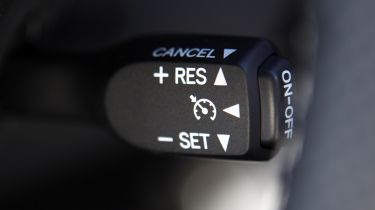
Cruise control has become a common feature in modern cars, allowing drivers to maintain a steady speed without using the accelerator pedal. Ideal for long motorway drives, traditional cruise control allows you to set a specific speed, giving your right foot a much-needed break. While this tech has been around since the 1960s, the system has evolved in recent decades. The latest adaptive cruise control (ACC) systems use sensors to monitor the traffic ahead, automatically adjusting your car’s speed to maintain a safe following distance.
Different carmakers have their own versions of these systems – Audi’s ‘Adaptive Cruise’, BMW’s ‘Active Cruise Control’, and Volvo’s ‘Pilot Assist’ are just a few examples – and some are more intelligent than others, even changing lanes and steering autonomously. Some cars are also equipped with ‘Traffic Jam Assist’, which can handle stop-and-start traffic, easing the stress of daily commutes.

From straightforward speed control to sophisticated, traffic-responsive systems, cruise control technology can help to take some of the stress out of long journeys. Read on to explore how these features work and how to use them.
What is cruise control?
Cruise control is a system that maintains the speed of a car automatically. Using controls found on or behind the steering wheel, the driver can set a desired speed that the car will continue to follow without any use of the accelerator pedal. It’s found in cars with an automatic or manual gearbox, although its functions are usually more limited in the latter. Most electric cars also come with cruise control.
It’s designed to be used on long A-road or motorway journeys, when prolonged use of the accelerator pedal could cause cramp or soreness in the driver’s right foot. Once a speed has been set, the driver can relax their foot and focus on controlling the car’s steering. The first cruise control systems held the throttle open mechanically, but modern systems are computer-controlled. Many cruise control systems will only activate above a certain minimum speed, usually around 25 to 30mph.
What is adaptive cruise control?
Adaptive cruise control (often abbreviated to ACC) is a more advanced cruise control system that uses lasers, cameras or radar mounted in the front bumper to track the speed and position of the vehicle in front. Cars fitted with the system can automatically match the speed of the vehicle in front and maintain a safe distance. Many systems allow the driver to set their preferred distance to the vehicle in front.
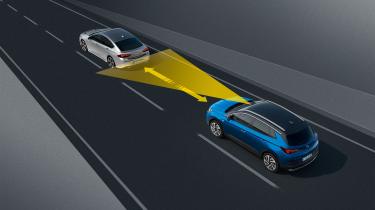
If the vehicle ahead slows down, the driver’s car will also slow down without the need to use the brake pedal. If the vehicle ahead speeds up, the driver’s car will only speed up until it reaches the limit set by the driver. However, only systems paired with an autonomous emergency braking (AEB) system will automatically perform an emergency stop if the car ahead comes to a sudden halt. In 2024 AEB was made a legal requirement for all new cars sold in the UK and the EU.
Adaptive cruise control is sometimes referred to as ‘dynamic’ cruise control, while other automakers use their own names; Mercedes calls it ‘Distronic Plus’ and Porsche, ‘Porsche Active Safe’.
Some vehicles even have ‘Traffic Jam Assist’, an extension of adaptive cruise control that can automatically slow the car to a halt as well as accelerate and brake at low speeds in congestion, reducing driver fatigue. It’s worth noting that after coming to a halt for more than a few seconds, safety requirements mean driver intervention is usually required; squeezing the accelerator should allow Traffic Jam Assist to resume.
How do I use cruise control?
Check your car’s handbook for the location of the cruise control buttons as they differ from vehicle to vehicle. They are often found in an easy-to-access location, such as on the steering wheel or column stalk, to make them quick and safe to use.
The system can be overridden at any time by pressing on the brake pedal, so you should keep your foot close to the brake in case of emergencies. There may be differences in controls between different manufacturers, so always read your car’s handbook first. Some typical cruise control buttons include:
- On/off: This activates the system, but probably won’t hold you at your desired speed. Turning it on will almost always be accompanied by a dashboard light.
- Set: Once the system is switched on, pressing the set button should tell the car to hold the current speed. In most cars this will turn the dashboard indicator green.
- Cancel: This pauses the cruise control, so you have complete control again, without turning cruise control fully off. The cruise control should still remember the speed you chose to cruise at.
- Res or resume: Pressing this will see the car accelerate back up to the speed you chose before hitting the cancel button or pressing the brake pedal. You'll still need to change gears in a manual car if necessary. An automatic gearbox will change gears for you.
- Up and down arrows or ‘+’ and ‘-’: With cruise control activated, use these to increase or decrease the car’s speed. Single presses often increase or decrease the speed in small increments, while holding the same button or stalk changes it in increments of 5mph or even 10mph. Of course, this varies from one model to another.
Cruise control is best used on long stretches of motorway and should be used to maintain a safe speed while the driver pays full attention to their surroundings. Drivers should not treat cruise control like an autonomous driving system, and the driver needs to pay as much attention to the road when using cruise control as they do with regular driving.

What is a speed limiter?
Some cars are fitted with a speed limiter, either alongside cruise control or on its own. As with cruise control, you set the maximum speed you’d like to travel at, but unlike cruise control, you're still required to press down the accelerator. This is ideal for busy speed-limit zones, where you may want to maintain complete control of your speed without exceeding the limit. Squeeze the accelerator, and your car will simply reach your chosen speed and stop accelerating. However, pressing the throttle pedal all the way down will override the system –it’s a fail safe designed to let you accelerate out of trouble if needed.
What about Intelligent Speed Assistance?
Like Autonomous Emergency Braking (AEB), Intelligent Speed Assistance (ISA) is another mandatory safety feature fitted to every new car sold in the UK and the EU from 2024. Unlike a traditional speed limiter above, the ISA system uses your car’s GPS and traffic sign recognition cameras to determine the road’s speed limit. The ISA system then limits your car to this speed, stopping you from breaking the speed limit.
The system can be overridden in certain situations when the driver pushes hard on the accelerator pedal, and it can be turned off entirely. However, the system is automatically reactivated every time you start the car. From July 7th 2024, it is a legal requirement for every new car sold in the UK to come with the technology, including unsold new cars sitting in dealerships that will need to have the system retrofitted.
What is the benefit of cruise control?
When should i use cruise control, is cruise control safe, does cruise control save fuel, car technology made simple….
- What are brake pads and discs?
- What is autonomous emergency braking?
- What is ESP on a car?
- What is traffic jam assist?
- What are blind spot monitoring systems?
- What is cross traffic alert?
- Euro NCAP: how safe is my car?

Charlie writes and edits news, review and advice articles for Carbuyer , as well as publishing content to its social media platforms. He has also been a regular contributor to its sister titles Auto Express , DrivingElectric and evo . As well as being consumed by everything automotive, Charlie is a speaker of five languages and once lived in Chile, Siberia and the Czech Republic, returning to the UK to write about his life-long passion: cars.
Recommended
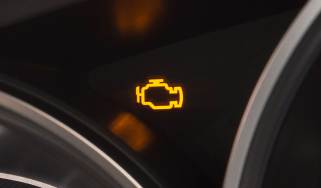
Engine management light: what to do if it comes on
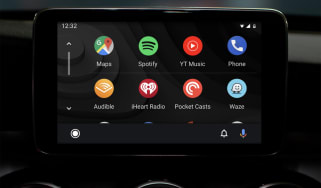
What is Android Auto? Apps, music and how to use
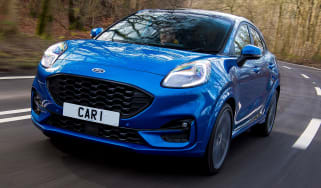
Ford EcoBoost engines: what are they and should you buy one?
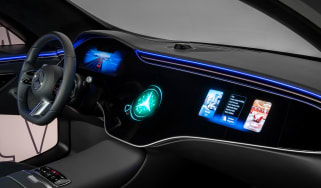
Mercedes jumps on AI tech with new MBUX software
Most popular.

Best new car deals 2024: this week’s best PCP finance offers
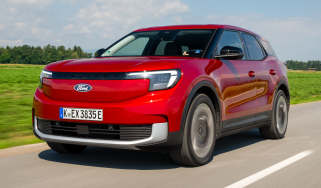
Ford Explorer review – good-to-drive EV with a long range
Tips & advice

Car dashboard warning lights: the complete guide

Electric car charging stations: a complete guide

PCP vs HP – which type of car finance is right for you?

Average speed cameras: how do they work?

Top 10 best car interiors

Top 10 best electric cars 2024

Top 10 best cheap-to-run cars 2024

The UK's top 10 fastest hot hatchbacks 2024
Active Cruise Control explained
More and more cars are coming out with Active Cruise Control, but what is it and how does it work?
BY WAY OF background, Cruise Control, as opposed to Active Cruise Control, (ACC) has been around since the 1960s and is now, more or less, a standard feature on all new cars, including trucks, tractors and even large “Cruiser” type motorcycles.
The normal cruise control we’re all used to allows a driver to set a speed and then the car will maintain that speed without the driver needing to touch the accelerator pedal. Then when the driver needs to adjust the speed, they can either do so via the cruise control stalk and/or buttons on the steering wheel, depending on the make and model of vehicle. The driver can also deactivate cruise control via the brake pedal, or momentarily increase the speed, say, when overtaking, by pressing the accelerator pedal. Cruise Control may return to the preset speed if you have deactivated it by pressing the accelerator, but will always disengage entirely if you have used the brakes or changed gear in a manual. Check your car’s owner manual for confirmation of that function on your car.
Older cruise control systems simply used the throttle, so would let the car speed up beyond the target speed on downhills. Newer systems use the brakes and even gears to properly maintain the target speed up or down hill.
Now cruise control has evolved to being able to adjust its speed based on the speed of the vehicle in front. Often used interchangeably, Active Cruise Control and Adaptive Cruise Control are one and the same – as usual manufacturers like to invent different names for the same technology. At least they’re both abbreviated to ACC!
What is Active Cruise Control?
Well, it works in similar way to your regular cruise control. The driver brings the car to their desired speed and presses the set button, then the car maintains that speed. The ‘active’ part is that your car will slow down if your car detects another car in front travelling more slowly. That’s perfect for freeway driving, particularly in traffic, and longer trips. The Active component of Active Cruise Control comes in the form of a RADAR or LIDAR sensor (depending on your manufacturer’s choice of technology) in the front of the car. This sensor allows you to set the distance you want to follow the car in front, normally measured in time, typically 2, 3 or 4 seconds.
For instance, let’s say that you have your ACC set at 105km/h and a slower vehicle pulls out in front of you further up the road doing a mere 90km/h. ACC is designed to pick this up and slow your vehicle down to match the speed of that vehicle, and follow at the distance that you have set. When that vehicle moves out of your lane, and there are no other cars in front of you, your car resumes your original 105km/h. It does all this without any throttle or brake inputs from you. But the system isn’t perfect, and we’ve got more on that below…
So, is ACC helpful?
Yes. Active Cruise Control was designed with high-volume commuter traffic in mind. Where speeds are constantly changing from 100km/h to a dead stop with not much warning. It only takes one driver not paying attention for 1-2 seconds for an accident to happen. Boredom, fatigue and in-car distractions are the biggest cause of accidents on the roads today.
How much does ACC cost?
When this sort of radar technology first appeared it was as a $1500 cost option on the $220,000+ 1999-model Mercedes-Benz S-Class . Today, the average price point of cars with this type of feature as standard is approximately $60,000, so a lot of cars above that price point will feature ACC as standard, primarily European and Asian cars. The great news is that this type of technology is becoming a priority to more manufacturers, who are making it available in more affordable cars. Mazda have it as standard in both their top spec Mazda6 Atenza ($48,510+ORC) and Mazda3 Astina ($38,190+ORC), though it can’t be cost-optioned in lower models.
Subaru offer it as standard equipment on the top-spec Forrester and Outback models, and all of the Liberty range. The latter are the only vehicles in Australia that offer the feature in a sub-$30K car ($29,990+ORC). Interestingly Subaru are one of the few manufacturers that don’t use radar technology for this feature. Instead they use an optical system called Eyesight based on stereoscopic cameras placed on either side of the rear view mirror.
On the flip side you can still spend $95,000-plus on an HSV GTS and not be able to access this type of technology.
Is it a tick box on the option list?
Not necessarily. ACC will usually be part of a suite of safety features that some manufacturers refer to as ‘Forward Collision Warning’. These systems are always active and commonly include, lane departure warnings, lane departure assist, brake assist, pedestrian detection and so on. Because all these systems use primarily the same radar, laser or camera system (in some cases, a combination) as the ACC, they will be combined and marketed as a whole safety system depending on the manufacturer and the vehicle.
Do all ACC systems work the same?
No. There are a lot of variations between manufacturers and even differences from model to model under the same marque. Some ACC systems only work between 40km/h and145km/h and others can be active from stop all the way to 250km/h, requiring a touch of the accelerator to get going again if it does happen to bring you to a stop. None should be fully trusted.
Heavy rain, fog and snow can interfere with the capabilities of these systems, and heading into the sun can throw out the camera-based systems. Windy roads and cars that dive in to gaps in front of you can confuse the ACC which may not react in time. The ACC may not detect long overhanging loads on trucks, or narrow vehicles like motorcycles. It is critical to understand the limitations of the system and be sure that you are only using these systems as a back up to your own driving. Don’t think it’s a set and forget kind of thing; you must still be paying attention to what’s happening around you.
Remember your set speed too. You might have set it for 100km/h and then spent many minutes in traffic below 50. All of a sudden once the road is clear the car will accelerate… and that might take you by surprise. But overall, ACC is very useful because it means you don’t need to fiddle with the cruise control when driving in heavy traffic on freeways.
If you do own or buy a car with this feature, make sure you take some to get a feel for how it works. If you’re like me, the sensation of something else controlling the car that you’re driving will be weird for the first few times.
Is it a Gimmick?
No, it’s genuinely useful, which is not something we can say all of the latest driver aids. With every new model release, more and more of this technology is being introduced. Fully automated vehicles are already being tested in different parts of the world and what we are seeing in the market place today, are the trickle down effects from that innovation.
With tech giants Apple and Google investing heavily in this type of automation for cars, the days of drumming along on your steering wheel (Google’s automated prototype was revealed without a steering wheel, but court rulings have dictated it be set-up for manual control) to your favourite song are numbered. Shame.
Jeep reveals seven concepts for the Easter Jeep Safari
Virtually drive the 2015 mazda mx-5 via xbox.
About Author
Lachlan wornes.
Whether it is trying to name a car just from its exhaust note, to being able to identify it from only a partial view of a tail light, Lachlan always finds himself wanting to know more without ever having to make a conscious effort to do so. He loves to look at them, listen to them and talk about them. Somehow driving them always makes him feel excited and relaxed at the same time. Growing up in rural Victoria made for some very liberal driving experiences from a very young age, which may have something to do with the passion that still exists. After spending all his 20’s in the snow fields of North America, the 9-5, 40hr work week never really suited him. After a brief stints with Road Magazine in the UK, and Jalopnik in the US, he has found his way back home to do what he loves, where he loves to be.
Škoda Octavia 2016 ,considerably cheaper than$30k, comes with ACC as standard equipment. Probably standard on the whole Skoda range.
Leave a Reply Cancel reply
Your email address will not be published. Required fields are marked *
Save my name, email, and website in this browser for the next time I comment.
Sign me up for the newsletter!

Monocoque 4X4s explained – Is this a good thing or not?
Username or Email Address
Remember Me

IMAGES
VIDEO
COMMENTS
With the help of a radar sensor, the adaptive cruise control with stop function detects the car in front and automatically maintains the safety distance prev...
When in use, active cruise control uses a radar sensor in the front bumper to sense and warn the driver if the vehicle in front slows down.It then maintains ...
Discover Adaptive cruise control with Stop feature. This driving-assistance system detects the car in front and automatically keeps a safe distance from it, ...
Adaptive cruise control A. Increase/Decrease the speed setting Display and adjustment of the distance setting to the vehicle in front (Adaptive cruise control) B. Select/Deselect the cruise control function C. Start/Pause of the Speed limiter or Cruise control with the speed setting saved Confirmation of vehicle restart after automatic stop ...
Citroen C4 / Citroen C4 Owner's Manual / Driving / Cruise control. This driving assistance function allows you to drive at the speed of your choice without the need to action the accelerator. This system is available above 40 km/h (25 mph), with 4th gear or higher on a manual gearbox or 2nd gear or higher on an automatic gearbox.
Updated May 9, 2022. Adaptive cruise control (ACC) is like traditional cruise control, but smarter. ACC systems allow you to set a desired speed until your vehicle encounters slower-moving traffic ...
Controls for Cruise control/Speed limiter/ Adaptive cruise control Side control bar 3. 1. Headlamp beam height adjustment 2. Active lane departure warning system 3. Lane positioning assist 4. Heated windscreen 5. Alarm 6. Electric child lock 7. Opening the fuel filler flap Central control bar (lower and upper) 1. Access the touch screen menus ...
We live with a Citroen C5 Aircross ... wireless charging and active cruise control. Combined with active lane assist, this gives you Level 2 autonomous driving on the highway, starting and ...
Cruise control is a great extra to have if you do regular motorway journeys, while adaptive cruise control arguably makes even more sense ... Found on: Citroen, Ford, Nissan, Peugeot, Renault ...
The cruise control must be active. To change the cruise speed setting, based on the vehicle's current speed: In +/- 1 mph (1.6 km/h) steps, briefly press button 2 or 3 as often as necessary. ... Citroen C3 2016-2024 Owners Manual: Key ignition switch. It has 3 positions: 1. Stop: inserting and removing the key, steering column locked.
2. 2018 Mazda 3. The 2018 Mazda 3 provides drivers with an adaptive cruise control system that detects rear-cross traffic and blind-spot monitoring, great for making safe lane changes. It also ...
Cruise control - particular recommendations 144 Programmable cruise control 144 Memorising speeds 146 Highway Driver Assist 147 Adaptive Cruise Control 147 Active Lane Keeping Assist 151 Active Safety Brake with Collision Risk Alert and Intelligent emergency braking assistance 156 Fatigue detection system 159
Adaptive cruise control (often abbreviated to ACC) is a more advanced cruise control system that uses lasers, cameras or radar mounted in the front bumper to track the speed and position of the ...
New Citroën C5Aircross SUV: enjoy your trip always at the right pace with Adaptive Cruise Control with Start & Go function #Comfort #CitroënAdvancedComfort #...
2000: BMW introduced radar "Active Cruise Control" in Europe on the BMW 7 Series - E38. 2000: Toyota was the first to bring laser ACC to the US market in late 2000, ... Citroen C4 Picasso & Grand C4 Picasso (2013-22), C5 Aircross Adaptive Cruise Control with Stop & Go
Wed Dec 02 2015, 12:25pm. Member No: #32973. Joined: Oct 26 2013. Location: lancashire. I've just updated the software from SMEG5.1FR4 to SMEG5.2CR1 because I read that it gave you the ability to turn off active cruise. Under certain conditions I would like to use the cruise control but without the auto engine braking.
Yes. Active Cruise Control was designed with high-volume commuter traffic in mind. Where speeds are constantly changing from 100km/h to a dead stop with not much warning. It only takes one driver ...
Adaptive cruise control (ACC) is an intelligent form of cruise control that allows vehicles to speed up and slow down automatically in order to keep pace with the traffic ahead. ACC is also known as autonomous cruise control, active cruise control, intelligent cruise control and radar cruise control. But regardless of what it's called, it's ...
It is set to active on (green bar above) by default. It switches off by pressing the button only with the engine running. Cruise can only be activated at 25mph and above. The indication you get is 'cruise active', whether the active cruise is in operation or not (ie it does not say 'active cruise active'). On mine, even though it says in the ...
Find out more info about Citroen C4 Picasso II ( 2013 - 2018 ) : https://www.youtube.com/channel/UCZvHdPZzOdONixt5mRRolngIf You have Cruise Control in Your C...
The largest English language online Citroen C4 and DS4 Owners Help and Support site incorporating C4owners.co.uk C4owners.com C4GP.org and DS4owners.org. ... The steering wheel switches are OK, but you can't set a speed for either the cruise control or the limiter - the dashes in the selected speed dispay ljust flash for a couple of seconds. ...
2024 Tesla Cybertruck Foundation - Power Share Voucher included. Clean CARFAX. 15 Speakers, 4-Wheel Disc Brakes, ABS brakes, Accessory 12" Silver Gauge Trim, Active Cruise Control, Adaptive suspension, Air Conditioning, Alloy wheels, Audio memory, Auto High-beam Headlights, Auto tilt-away steering wheel, Auto Up/Down Front Passenger & Rear Windows, Auto-leveling suspension, Automatic ...
The largest English language online Citroen C4 and DS4 Owners Help and Support site incorporating C4owners.co.uk C4owners.com C4GP.org and DS4owners.org. ... Eventually it was decided that the problem was in the cruise control switch on the steering wheel. A new switch was fitted and so far so good. merdzo : Wed Sep 30 2009, 08:52am
What is active cruise control and how does it work?Hello viewers and in todays knowledge centre video, James will be talking to you about active cruise. Spec...